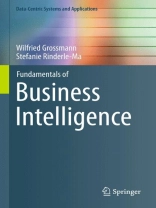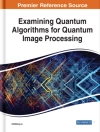This book presents a comprehensive and systematic introduction to transforming process-oriented data into information about the underlying business process, which is essential for all kinds of decision-making. To that end, the authors develop step-by-step models and analytical tools for obtaining high-quality data structured in such a way that complex analytical tools can be applied. The main emphasis is on process mining and data mining techniques and the combination of these methods for process-oriented data. After a general introduction to the business intelligence (BI) process and its constituent tasks in chapter 1, chapter 2 discusses different approaches to modeling in BI applications. Chapter 3 is an overview and provides details of data provisioning, including a section on big data. Chapter 4 tackles data description, visualization, and reporting. Chapter 5 introduces data mining techniques for cross-sectional data. Different techniques for the analysis of temporal data are then detailed in Chapter 6. Subsequently, chapter 7 explains techniques for the analysis of process data, followed by the introduction of analysis techniques for multiple BI perspectives in chapter 8. The book closes with a summary and discussion in chapter 9. Throughout the book, (mostly open source) tools are recommended, described and applied; a more detailed survey on tools can be found in the appendix, and a detailed code for the solutions together with instructions on how to install the software used can be found on the accompanying website. Also, all concepts presented are illustrated and selected examples and exercises are provided.The book is suitable for graduate students in computer science, and the dedicated website with examples and solutions makes the book ideal as a textbook for a first course in business intelligence in computer science or business information systems. Additionally, practitioners and industrial developers who are interested in the concepts behind business intelligence will benefit from the clear explanations and many examples.
Table des matières
1 Introduction.- 2 Modeling in Business Intelligence.- 3 Data Provisioning.- 4 Data Description and Visualization.- 5 Data Mining for Cross-Sectional Data.- 6 Data Mining for Temporal Data.- 7 Process Analysis.- 8 Analysis of Multiple Business Perspectives.- 9 Summary.- A Survey on Business Intelligence Tools.
A propos de l’auteur
Wilfried Grossmann is retired full professor for statistics at the Faculty of Informatics, University of Vienna. He has published in the areas of business informatics, medical informatics, data mining, operations research, applied statistics and statistical computing. His research focuses on the interface between applied statistics, statistical data management and metadata for statistical information systems. He was leader and key researcher of several European projects for the development of statistical information systems, statistical metadata management and data validation.Stefanie Rinderle-Ma is full professor and head of the research group Workflow Systems and Technology at the Faculty of Computer Science, University of Vienna. Stefanie’s research interests focus on business process compliance and intelligence, human-centered approaches in business process management (BPM, ) and process-aware information systems (PAIS). She is co-author of more than 120 conference and journal publications with over 4600 citations (according to scholar.google.com) in the area of PAIS, BPM, and service-oriented architectures.












